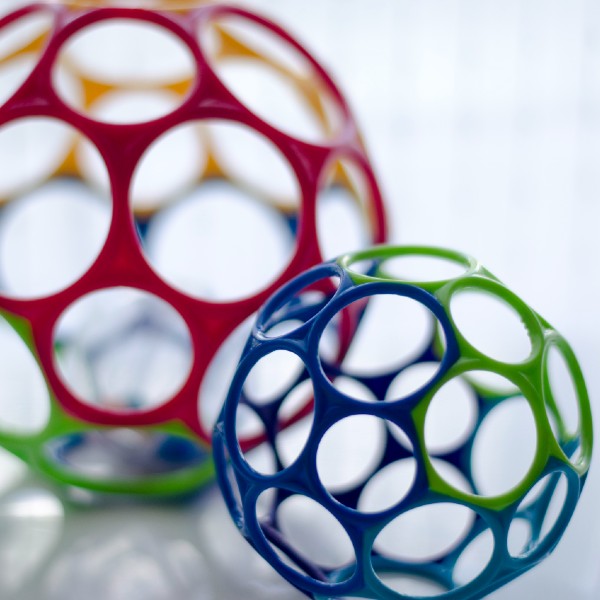Watch our recent talk at the 2021 Industrializing Cell-Based Meats and Seafood Summit. Watch Now >>
“Instead of using pure cells directly from the culture… scaffolding is needed to create a structured tissue meat product.”
The cultured meat industry is built on two critical process components — microcarriers used to help grow cells in suspension and the scaffolds used to create the structure of the meat — and the cell culture media used to grow the cells. The focus of this blog is on the first two components, with the next blog addressing cell culture media.
Microcarriers are tiny beads, typically 100-200 um in diameter, made of a polymeric material like polystyrene. Since they are lightweight and buoyant, microcarriers can be maintained in suspension in stirred tank bioreactors or spinner flasks where they act as surfaces on which cells can adhere and grow on. As cells proliferate on the beads, more beads can be added to the culture as it scales up to facilitate bead-to-bead transfer of the cells to prevent aggregation and clumping of the beads and cells. The addition of growth factors or other cell media additives to the culture can facilitate the differentiation of the cells and functionalize the bead surfaces with hydrogels or other polymers embedded with the necessary stimulatory agents. Degradable and edible microcarriers are being explored to separate the cells from the inedible microcarriers. Several factors (e.g., thermal, chemical, mechanical, photo, or biological) can be employed to degrade the bead, leaving behind the cells to be recovered with degradable microcarriers. For edible microcarriers, the materials used become part of the final cultured meat sample. They may contribute to the flavor, texture, or color of the product, too.

Instead of using pure cells directly from the culture or formulating the cells with other additives and binders into ground meat products, scaffolding is needed to create a structured tissue meat product. Scaffolds can also aid cell differentiation by providing biomechanical support for muscular cell growth and delivering growth factors to isolated regions to stimulate specific cell types. Promising studies have showcased millimeter-thick cultured steak, but typical materials used in these tissue scaffolds are inedible. Since scaffold removal is complicated without damaging or destroying the tissue, edible biomaterial scaffolds made of hydrogels from natural polymer networks have the advantage of simplifying the process. Conveniently, scaffolds may also improve the final product’s texture. For example, some recent literature reports have used textured soy protein scaffolds to make bovine skeletal muscle tissues. Soy protein material is an inexpensive “byproduct” of soybean oil processing. It can be easily engineered to have specific properties (e.g., porosity and surface area) or shapes to support cell proliferation as an edible scaffold.
Late in 2020, Eat Just was the first recipient of regulatory approval to sell cultured chicken in Singapore. This event ushered in the first entry of cultured meat to the world built on the backbone of bioprocessing and tissue engineering advancements. Although many producers of cultured meat products will keep their manufacturing processes secret, labs worldwide are rigorously testing various materials and compositions for more scalable and presentable cultured meat products. As described here, microcarriers and tissue scaffolds are two key components that support cultured meat production. They will continue to be modified to support the diversity of cell types and meat products manufactured in the future.
Cell-Based Meat Process Development Series
- Part 1: An Introduction to the Cell-Based Meat Revolution
- Part 2: The Variety of Process Considerations in Cell-Based Meat Production
- Part 3: How Cell Proliferation for Cultured Meat Production Relies on the Appropriate Microcarrier or Scaffold Selection
- Part 4: The Importance of Cell Culture Media Optimization for Cost and Productivity Considerations in Cell-Based Meat Processes
- Part 5: The Role of Analytics in Cell-Based Meat Production
email Subscribe to Our Communications Signup to receive new product updates, technical tips and more.
